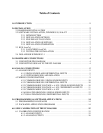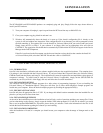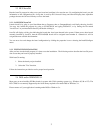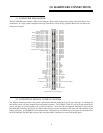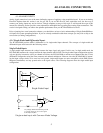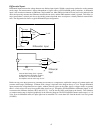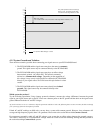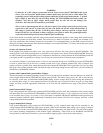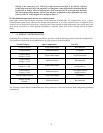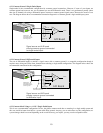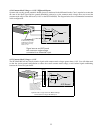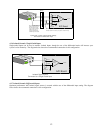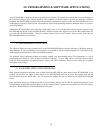
4.1.2 System Grounds and Isolation
There are three scenarios possible when connecting your signal source to your PCI-DAS1000 board.
1. The PCI-DAS1000 and the signal source may have the same (or common)
ground. This signal source may be connected directly to the PCI-DAS1000.
2. The PCI-DAS1000 and the signal source may have an offset voltage
between their grounds (AC and/or DC). This offset it commonly
referred to a common mode voltage. Depending on the magnitude of
this voltage, it may or may not be possible to connect the PCI-DAS1000
directly to your signal source. We will discuss this topic further in a later
section.
3. The PCI-DAS1000 and the signal source may already have isolated
grounds. This signal source may be connected directly to the
PCI-DAS1000.
Which system do you have?
Try the following experiment. Using a battery powered voltmeter*, measure the voltage (difference) between the ground
signal at your signal source and at your PC. Place one voltmeter probe on the PC ground and the other on the signal source
ground. Measure both the AC and DC Voltages.
*If you do not have access to a voltmeter, skip the experiment and take a look a the following three sections. You may be able to identify
your system type from the descriptions provided.
If both AC and DC readings are 0.00 volts, you may have a system with common grounds. However, since voltmeters will
average out high frequency signals, there is no guarantee. Please refer to the section below titled
Common Grounds
.
If you measure reasonably stable AC and DC voltages, your system has an offset voltage between the grounds category.
This offset is referred to as a Common Mode Voltage. Please be careful to read the following warning and then proceed to
the section describing
Common Mode
systems.
7
+1V
-13V
+2V
-12V
+3V
-11V
+4V
-10V
+5V
-9V
+6V
-8V
+7V
-7V
+8V
-6V
+9V
-5V
+10V
-4V
+11V
-3V
+12V
-2V
+13V
-1V
Gray area represents common mode ran
g
e
Both V+ and V- must always remain within
the common mode ran
g
e relative to LL Gnd
Vcm (Common Mode Volta
g
e) = +5 Volts
Vcm
With Vcm= +5VDC,
+Vs must be less than +5V, or the common mode ran
g
e will be exceeded (>+10V)



